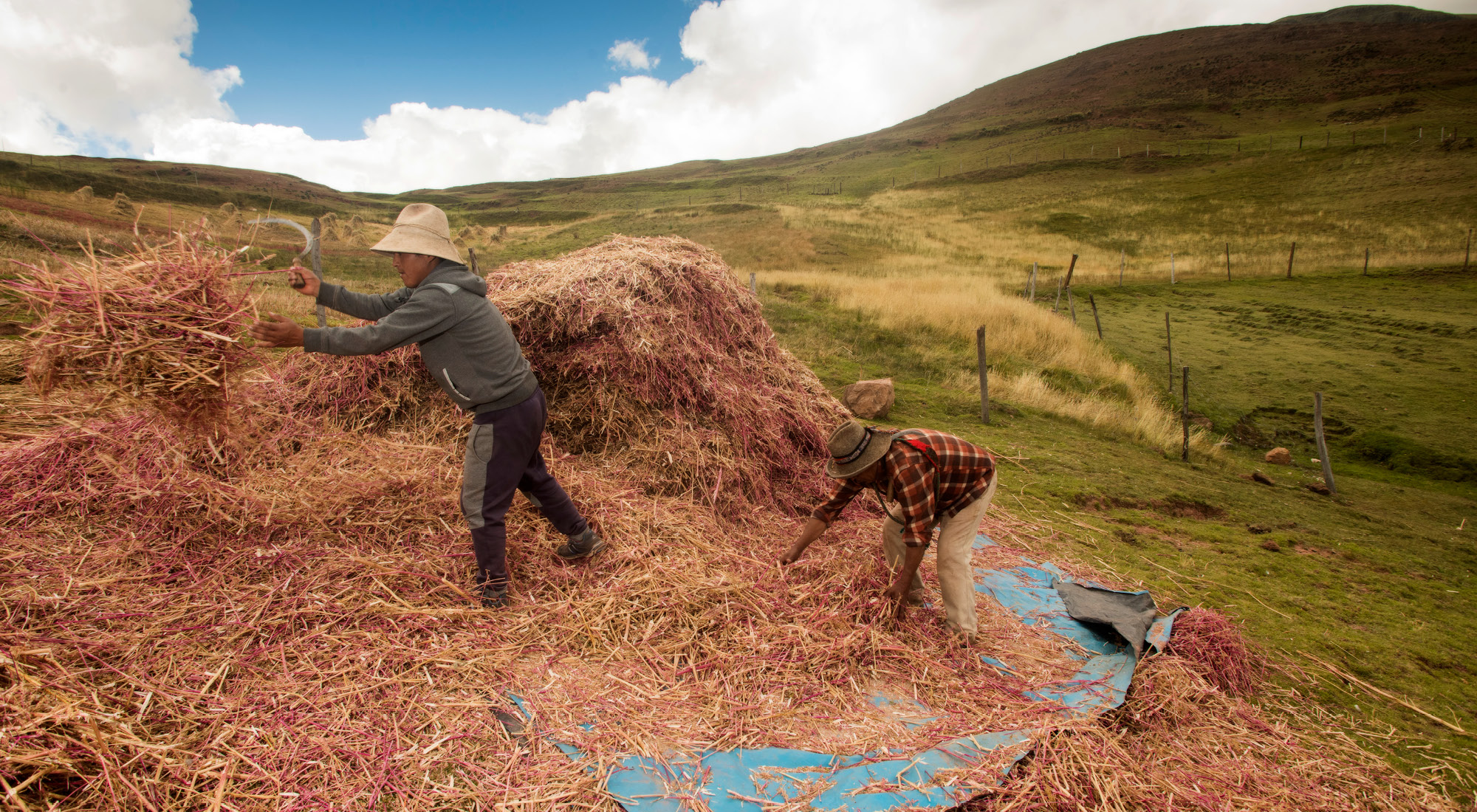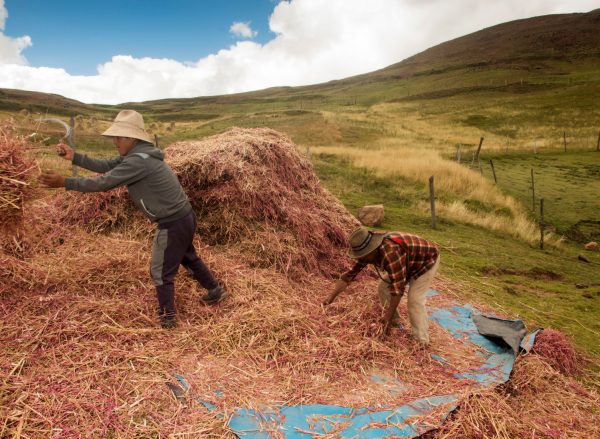How Las Bambas is supporting improvements in traditional agriculture methods in its host communities.
In many of our host communities, agriculture has long been a primary source of income and food security for families. Many of the projects we implement across our sites are designed specifically to support sustainable agricultural practices through the introduction of new technologies and skills to increase crop yields and financial returns.
The communities near Las Bambas’ operation have been producing potato, quinoa, tarwi (a highly nutritious bean native to Peru, Bolivia and Ecuador) and barley for generations. However, with communities located at altitudes between 3,700 and 4,200 metres above sea level and isolated from cities, technological advances that could improve crop yields remained relatively unknown. Traditional crop planting and harvesting was highly labour intensive, lower-quality seeds were used, there was a high incidence of plagues and crop infestations and land was managed primarily for subsistence production.
When Las Bambas engaged with local stakeholders about possible projects, many communities mentioned opportunities to improve food security, create a reliable source of income for families and create opportunities for employment and sustainable development. In response and in order to meet existing commitments with some communities, the Andean Crops program was developed and implemented from 2016.
Prior to the start of the program, the team undertook a field diagnosis to determine key indicators, prioritise crops to be included and develop a schedule to enter the various communities. They then presented the proposed program to each community, which included:
- Dialogue meetings with leaders and community members, to explain the scope of the project and reach agreement on community involvement and desired outcomes
- Registration of participants in the program, who were determined to be those most interested in and could most benefit from the program
- Timelines and the role of Las Bambas and each participant in the program, and expectations of each side during the delivery of the program.
Following this initial registration phase, Las Bambas and its agricultural provider worked directly with each beneficiary to determine what land would be used and which crops would be best suited to that land, soil quality and topography and then the lending of machinery to plough and furrow the land.
Group training sessions and one-on-one technical support sessions were held with each beneficiary, based on the specific needs of each community. These personalised support sessions were key to ensuring the group training was being implemented in field and to deliver tailored training, which then also served as input for future group training sessions.
As the participants in the project developed their skills and knowledge, Las Bambas, with the support of the Challhuahuacho District Government, also held agricultural fairs to promote the work of the communities and involve them in local and regional economic markets and to begin supplying produce to local businesses. Las Bambas also supported the creation of agricultural associations to improve their buying and wholesale power.
The program has been very successful in the communities where it has been implemented, generating the following results after three years:
- 1,655 participating families from more than 17 different communities;
- Co-financing of the program, with costs shared between participants and Las Bambas;
- 45% of participants are women;
- More than 223 hectares cultivated during 2019;
- Three agricultural associations developed;
- 300% increase in yield of potato crop, from 5 tonnes to 20 tonnes per hectare;
- 230% increase in barley yield per hectare, from 0.6 to 1.6 tonnes per hectare;
- 200% increase in quinoa yield, from 0.4 tonnes to 1.4 tonnes per hectare;
- 50% increase in tarwi yield, from 0.4 to 0.6 tonnes per hectare;
- 0.87 tonnes of garlic per hectare being produced, with little to no garlic being produced before that;
- 45% of potato, tarwi, barely and quinoa crops have been sold, contributing to the economic livelihood of participants;
- 80% of garlic produced has been sold;
- A 220% increase in food availability for families; and
- 100% increase in the gross value of land per hectare.
For Braulio Pezo, program participant from Manuel Seoane Corrales community, the program has meant a significant increase in his crop harvest. “Now we work with a tractor, before this we worked our crops with picks and hoes as our ancestors and traditions did. So, we never had production like we do now.”
“The specialists brought supplies to care for the plant and taught us how to care for our crops,” said Marcelina Martinez, a participant from Chuicuni community.
Las Bambas’ Andean Crops program has been recognised by the Peruvian mining society as a model agricultural project and is an example of how mining and agriculture can exist side-by-side.





